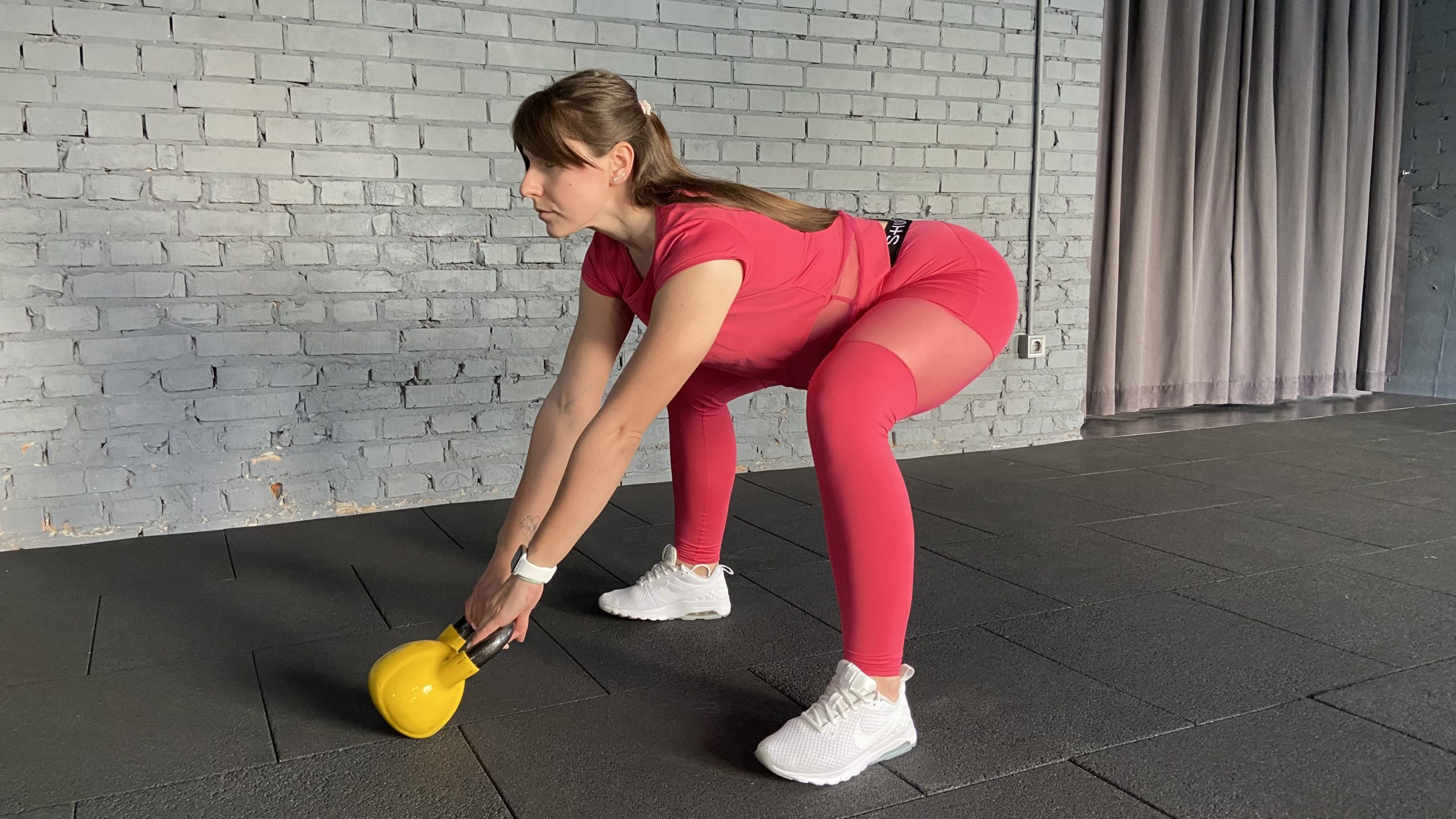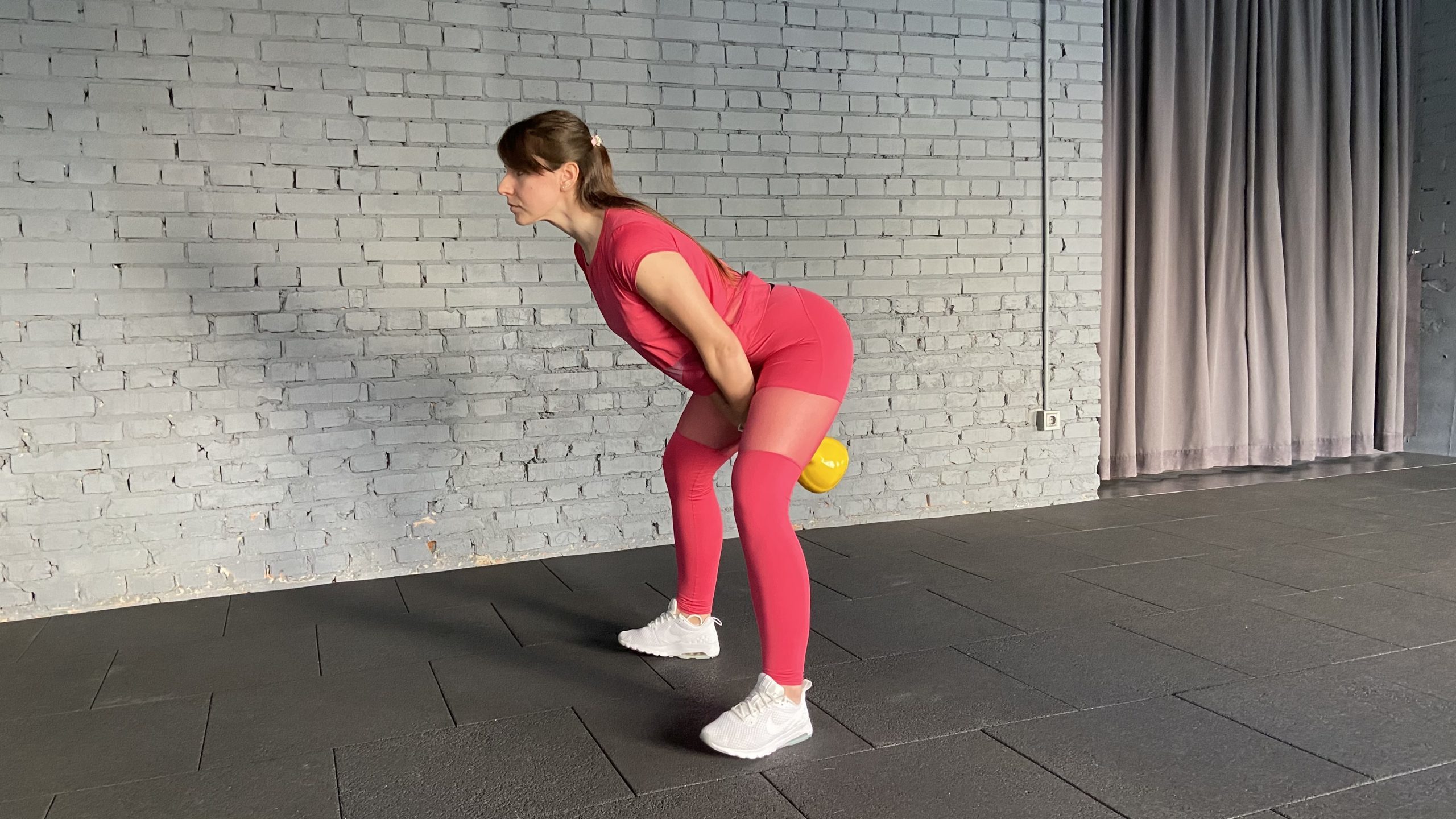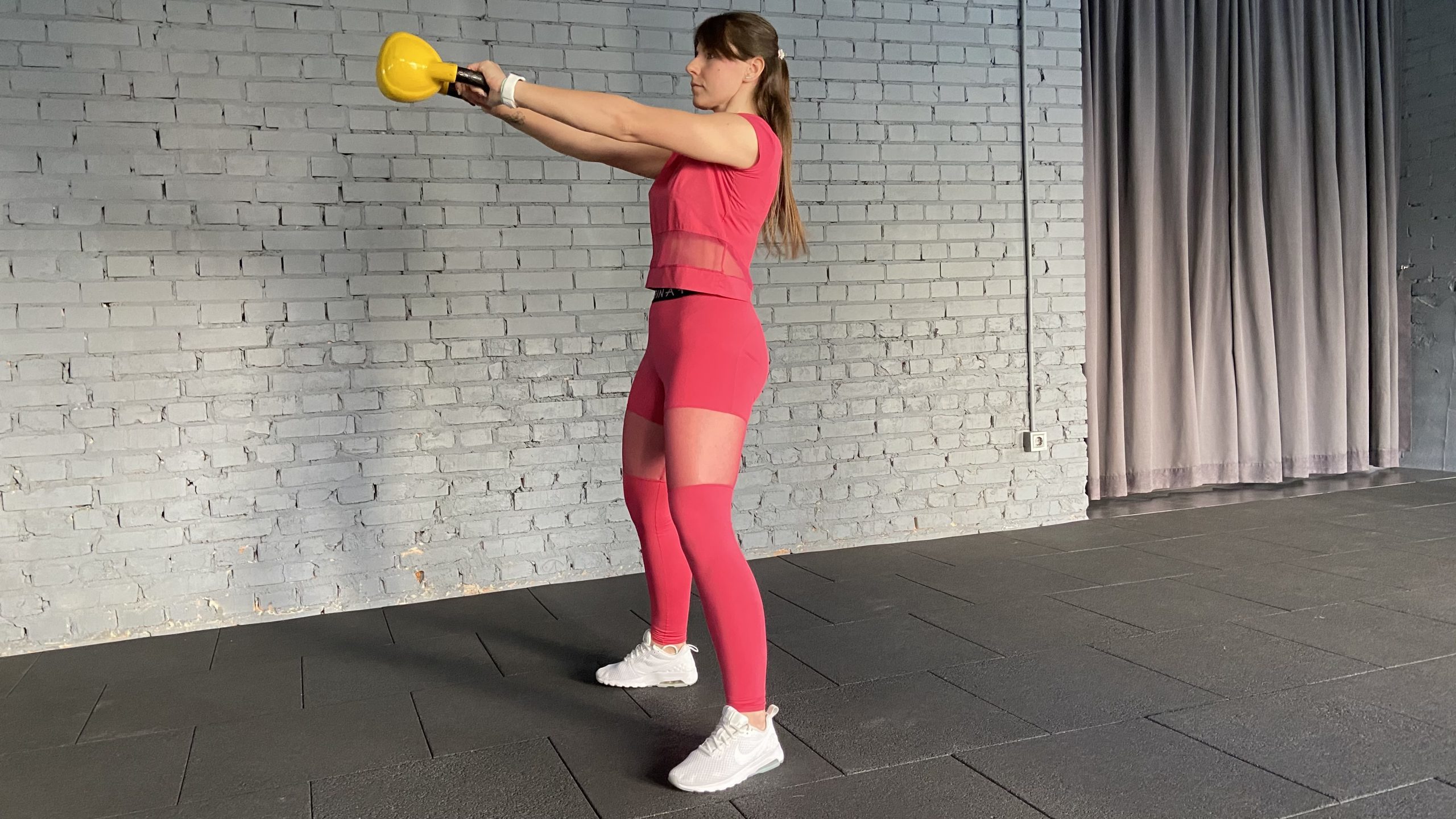Some links in this article are affiliate links, which means I earn from qualifying purchases.
Kettlebell swings are an old-school exercise that is overlooked by most modern-day gym goers.
They are often left out of a training program to make room for the bigger lifts like the bench press, deadlift, or squat.
There is no doubt that they are an amazing exercise if done correctly.
Kettlebell swings target the whole body, build strength in the posterior chain, and increase aerobic fitness.
But is it worth doing kettlebell swings every day? What are the benefits of doing this, and are there any drawbacks?
The 9 main benefits of kettlebell swings every day are:
I will go through the benefits and other factors of kettlebell swings every day. Lets first talk about technique tips of kettlebell swings.
What Is The Kettlebell Swing?
The kettlebell swing is a ballistic exercise that works the posterior chain (the back and hamstrings).
The idea behind it is a pendulum motion where the kettlebell is swung backwards and forwards back between the legs and up to eye level.
The kettlebell swing targets several muscles in the upper and lower body. It can be performed with both hands or one hand, and you can even alternate hands between each swing.
Despite what many people think, the swing comes from the hips, not the arms.
The hip hinge, followed by powerfully driving the hips forwards, is what creates the momentum to bring the kettlebell up. From this point, the pendulum motion keeps the exercise going through several reps.
Kettlebell Swing Technique
This is a brief description of the kettlebell swing technique. The following is not meant to be a complete guide, refer to coach or trainer for better cues and tips.
Step 1: Get Your Stance
Stand with your feet shoulder width apart and grip a kettlebell with both hands

Step 2: Hip Hinge
Hinge at the hips to bring your torso forwards, and bring the kettlebell back between your legs

Step 3: Drive Forward
Drive your hips forwards and push through your heels to pull the kettlebell up to eye height, keeping your arms straight
Step 4: The Fall
The kettlebell will naturally fall back down. As it does so, control the weight by contracting your muscles. Shift your weight back into your heels whilst hinging at the hips again to move the kettlebell between your legs

Step 5: Repeat
That completes one rep of the movement. You can complete as many sets and reps as you like depending on your programming.
Make sure to look straight ahead, and keep your chest lifted and your shoulders back. You should have a stable base so plant your feet firmly on the floor.
Programming kettlebell swings is also discussed later in the article
Factors To Consider For Kettlebell Swings Every Day
There are a few different factors you need to consider if you want to do kettlebell swings every day.
Specific Training Program
Firstly, look at your current training program. If you work out every day, this leaves little room to add in kettlebell swings every day. However, if you have room for extra workouts or exercises, you can program them into your routine nicely. Kettlebell swings can be added to upper, lower, or full body workouts.
Think about the intensity of your training program. If your workout is already too long and intense, you won’t want to be adding in a bunch of kettlebell swings. This will add extra volume to your workouts, even if the kettlebell is only light.
If you have very specific goals that require you to perform exercises that target certain muscle groups, kettlebell swings could negatively affect your workouts and decelerate the progress towards your goals.
Your Aerobic Endurance
You also need to take into account your current aerobic fitness levels, and how quickly you can recover from your workouts. After any workout, the body needs adequate amounts of time to recover.
During this time, muscle damage is repaired and ligaments, tendons, and soft tissue is strengthened. These adaptations are how we build muscle and gain strength.
Recovery is subjective. When considering if you will be able to recover from doing kettlebell swings every day, factors to consider are your age, diet, sleep, and genetics.
You should also consider how you feel after your current workouts.
For example, if you already get very tired with your training program, and you only workout once a week, jumping to kettlebell swings every day might not be the best idea.
If you are used to working out daily, recovery might not be as much of an issue for you. It also depends on your current fitness levels.
Personal Preference
The final factor to consider is your preferences.
If you hate kettlebell swings, you won’t want to do them every day. If you don’t have time, or don’t want to work out every single day, you will not stay motivated to grab that kettlebell!
9 Benefits Of Kettlebell Swings Every Day
Swinging the old kettlebell every day does have many benefits. Lets discuss some of the main ones.
1. Improve Overall Strength
Kettlebell swings will improve strength in the whole body, especially if you are untrained or new to working out. Every muscle from the core, glutes, quads, deltoids, and arms are targeted with this movement.
One study showed that the large mechanical damage during a swinging exercise makes it a useful addition to any strength and conditioning program [1].
Of course, there is a limit to the amount you can overload a kettlebell swing, but the dynamic nature of the exercise will lead to muscle growth and conditioning.
2. Increases Aerobic Capacity
If you’ve ever been to a circuit training class, you’ll probably have done kettlebell swings in one of the stations.
Kettlebell swings are a form of cardio. They work your aerobic energy system, and build endurance.
This is particularly true when you are doing higher reps of 15 or above. A study by the American Council of Exercise found that kettlebells provide a higher intensity workout compared to other traditional lifts [2].
3. Helps With Fat Loss
Because kettlebell swings use the whole body and are an effective cardio exercise, they can help with fat loss. If your goal is to lose fat whilst gaining muscle, doing kettlebell swings every day is a great option.
4. Easy To Recover From
I spoke about the factors to consider when you want to start doing kettlebell swings every day, and one of those factors was recovery.
Recovery is subjective. However, most people will easily be able to recover from a few sets of light kettlebell swings, even if they do them every day.
This makes kettlebell swings a good exercise to help you build muscle without getting too fatigued from doing a full workout.
If you hate doing long workouts in the gym, opting for 2-3 quick sets of kettlebell swings each day might be more enjoyable for you.
5. Can Be Superset
You don’t have to do kettlebell swings every day as a standalone exercise. If you love working out, and you head to the gym every day anyway, why not add in some kettlebell swings as part of your normal workout?
The great thing about this exercise is that it can be placed in a superset with almost any exercise, which increases the intensity of your workouts. It also benefits you if your short on time by removing the rest period between the exercises.
Try adding kettlebell swings as part of a superset with another exercise. This makes doing them every day more fun and varied, and will help keep your motivation high.
6. Injury Friendly
If you have suffered with a previous injury, and struggle to use cardio or weight machines, kettlebell swings could be a better option for you. They do not place huge amounts of stress on the joints or muscles. If they’re done correctly, doing kettlebell swings every day are a perfect way to build muscle and strength around an injury.
Kettlebell swings every day can be used as part of a rehabilitation programme post-injury to help you ease back into working out. They are a lightweight exercise that helps you re-establish good movement patterns and total body coordination.
One study found that kettlebell swings can reduce back pain, and even enhance back health and function.
The research found that kettlebell swings can even reverse posterior strain on the discs in the lower spine, compared to other posterior chain exercises like deadlifts, which can actually make the pain worse. [2].
7. Improves Balance And Posture
Kettlebell swings improve balance and posture, even for well-trained athletes. The pendulum motion forces you to engage your core to keep your balance.
They also help you to practice good posture by keeping your head up and chest lifted to keep your spine neutral.
8. Convenient
There are few exercises that work the whole body with just one piece of equipment. Whether you are in the gym or at home, kettlebell swings can be easily added to your routine.
It’s a small weight that doesn’t take up much room, so can be easily transported and stored.
9. Teaches You The Hip Hinge
Kettlebell swings are a hip hinge movement. You will quickly learn that this is NOT a squat.
Your hips break before your knees at the starting of the movement and hence it mimics a deadlift. The hip hinge is the basis of many lifts and applies to practical applications everywhere.
4 Drawbacks to Kettlebell Swings Every Day
There are some drawbacks to kettlebell swings every day. Let’s discuss the ones that will affect you the most.
1. They require proper technique
Kettlebell swings look simple, but they can be difficult to get your head round. Because you are using your whole body, this exercise requires full body coordination, so it’s easy to get your form wrong.
It’s not just about swinging the kettlebell up. You need to use a hip hinging movement to pull the kettlebell back, before powerfully driving your hips forwards to swing it up to eye level. This can be a difficult movement to perform if you’re not used to the hip hinging movement.
You also need to have enough core strength and upper body strength to control the kettlebell throughout the reps.
I suggest either getting a coach to help you, or watching some online videos to make sure you have got the form down before attempting this exercise.
2. They are easy to get wrong
Due to the specific movement patterns needed for the kettlebell swing, it’s easy to get wrong. This exercise requires proper technique to perform correctly, and there’s little room for error when you’re swinging a weight around!
For this reason, kettlebell swings are not always appropriate, especially for those who are new to working out.
3. There is a risk of injury
Any exercise that is performed incorrectly can lead to injury. The kettlebell swing could be seen as a high-risk exercise because of the powerful movement required.
Swinging a kettlebell up to eye height puts the shoulder joint at risk. If the weight is not controlled properly, you could be left with an injury.
Therefore, I advise you to start with a light weight, and make sure you perfect your form before committing to doing kettlebell swings every day.
4. They require a good level of core strength
You need to have a decent amount of core strength to be able to control the kettlebell up and down with each rep. If you lack sufficient core strength, your form could be all over the place, making the exercise dangerous or ineffective.
Kettlebell Swing Every Day Programming
If you’re doing kettlebell swings every day, the frequency is already high, so it’s important to keep the volume low. You can keep the overall volume and intensity low by keeping your reps and sets to a minimum, or by using a light weight.
If you’re already at the gym working out, this can be added in at the end of your session. Or you can do kettlebell swings every day as a standalone exercise.
As a coach, I always start my clients off with three sets of 10 swings using both hands. If this starts to feel too easy, increase to three sets of 20 swings, either with both hands, or alternating between each hand.
If you have the time, you can do single sets of 10 throughout the day – one in the morning, one midday, and one in the evening. Alternatively, perform all three sets at once.
Frequently Asked Questions
How do I know if I’m fully recovered?
Listen to your body! This is the best answer I can give. Only you will know whether or not you feel recovered and ready to workout again.
You can workout even if your muscles are still a little sore from the previous gym session, but make sure you are not overdoing it. If you are struggling to walk because your legs are shaking, maybe go easy on yourself and use a lighter weight, or do fewer reps for your kettlebell swings.
You can also monitor recovery physiologically. There are heart rate monitors that you can buy to measure your resting heart rate.
Usually, this will be higher in the mornings, and will come to a plateau throughout the day (except when you’re exercising, of course). If your heart rate is the same each morning, this indicates your body is recovering nicely, and you’re ready for another workout.
If your heart rate is elevated, or if you feel extremely sore and tired, take another rest day.
What Weight Should I Use?
The weight you should use with kettlebell swings varies from person to person. Depending on your strength, power, and endurance, you might be able to lift more than your peers. If you have been training for a while and have built a good level of muscles throughout the whole body, you will likely be able to use a heavier weight than someone who is untrained.
I recommend choosing a weight that you can easily do 30+ reps with. If you’re doing this exercise every single day, you don’t want to be using a weight that you will go to failure with. This is going to be too taxing on the body, and could lead to fatigue and breakdown in your form.
Form is so important when you’re doing kettlebell swings. You should not be using a weight that is too heavy for you to proper control, otherwise you risk injuring yourself.
What Should I Do If I’m Struggling To Control The Weight?
Work on building strength in your abdominals and obliques to improve your strength. This will make it easier to control the kettlebell throughout the swings.
Core strength can be increased by doing isolated abdominal exercises, or through doing heavy compound lifts that recruit the core muscles. Practising kettlebell swings every day will itself improve your core strength too.
It’s also important to have strength in your upper body in order to properly control the kettlebell. Your deltoids and arms are key to a successful swing, so make sure you don’t miss your upper body workouts!
Where Do I Bring The Kettlebell Up To?
Technically, the American kettlebell swing allows for the kettlebell to travel overhead. But in the traditional kettlebell that we see in the gyms, the kettlebell should rise to eye height and no higher. It should stop when it’s horizontal to the ground.
The latter is a safer option for newbies, or even advanced lifters. It protects the shoulder joint and doesn’t require as much mobility and stability as an overhead swing does.
Should I Be Squatting Down Between Each Rep?
The short answer is no – you should not be squatting.
The kettlebell swing uses a hip hinging motion, not a squat. You push your hips back without bending your knees much, so that your torso leans forwards. It’s more similar to the Romanian deadlift than the squat.
Squatting down too far can reduce the power output of the posterior chain (the glutes and hamstrings), and increases tension on the anterior chain (the quads). This can lead to you using your shoulders and arms to generate the force, instead of your lower body.
Should I Do All Of My Reps In One Go?
Honestly, it’s up to you!
If you’re doing kettlebell swings every day, you can either do all of your reps in one set, or all of your reps in multiple sets at the same time. Another option if you have more time is to do one set in the morning, followed by more single sets throughout the rest of the day.
Whichever you choose, the important factor is that you’re getting the reps done (whilst maintaining perfect form, of course).
Final Thoughts
Doing kettlebell swings every day has many benefits. It’s a great full body exercise to help with strength, conditioning, and endurance.
Remember to listen to your body when choosing the intensity, reps, sets, and weight you use. Everybody responds differently. Be sure to check your form regularly, and adjust as you see fit.
If you’re looking for a way to increase the volume of your workouts, or want to increase daily calorie burn, performing kettlebell swings every day could be the answer.
References
[1] Lake JP., and Lauder MA. Mechanical demands of kettlebell swing exercise. J Strength Cond Res. 2012 Dec;26(12):3209-16. doi: 10.1519/JSC.0b013e3182474280.
[2] Schnettler C., et al. Twice the Results in Half the Time? ACE FitnessMatters. 2010 Jan/Feb.
[3] McGill SM., and Marshall LW. Kettlebell swing, snatch, and bottoms-up carry: back and hip muscle activation, motion, and low back loads. J Strength Cond Res. 2012 Jan;26(1):16-27. doi: 10.1519/JSC.0b013e31823a4063.
DISCLAIMER: This article is for intended for educational purposes only and not as an individualized exercise prescription, therefore no one can be held liable in the occurrence of injuries, damages or monetary losses as a result of the information.
About The Author

Athina Crilley is a Biochemistry graduate and a qualified health, nutrition, and recovery coach. She believes that health and fitness is a lifestyle and should be enjoyable. Athina currently works with online clients to achieve their goals and creates helpful and informative content online through her podcast and social media platforms. She has also written and published a book all about her struggles and recovery from an eating disorder called ‘Diaries of An Anorexic’.





